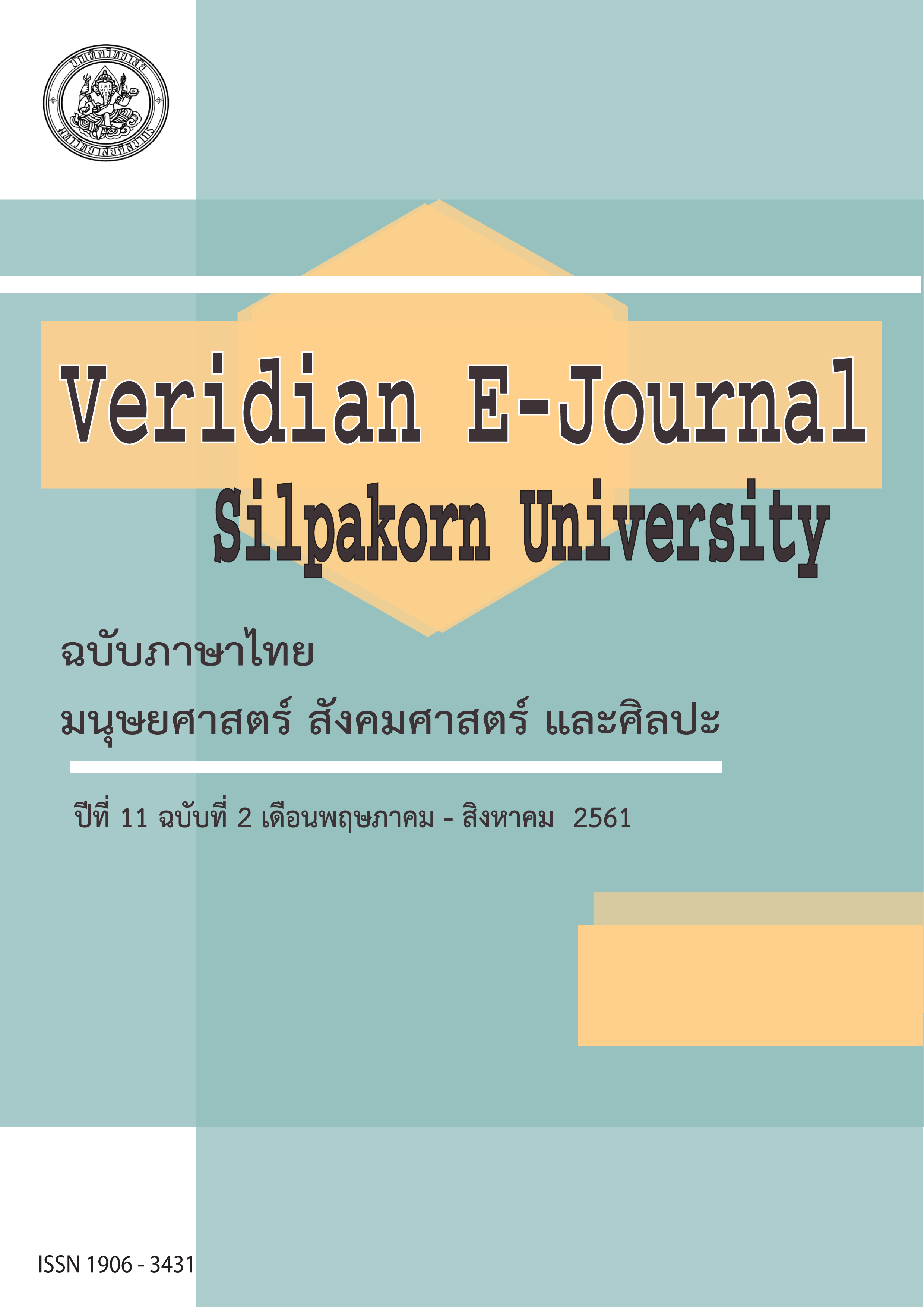แนวทางการจัดการเรียนการสอนภาษาจีนระดับมัธยมศึกษาตอนปลาย (Guidelines For Chinese Instruction In Upper Secondary Schools)
Main Article Content
บทคัดย่อ
งานวิจัยครั้งนี้มีวัตถุประสงค์เพื่อนำเสนอแนวทางการจัดการเรียนการสอนภาษาจีนระดับ มัธยมศึกษาตอนปลาย วิธีการดำเนินงานวิจัยประกอบด้วย 3 ขั้นตอน ขั้นตอนที่ 1 การศึกษาสภาพการจัดการเรียนการสอนภาษาจีนระดับมัธยมศึกษาตอนปลายสำหรับครูไทยที่สอนแผนภาษาจีนภาษาจีนในโรงเรียนสังกัดสำนักงานเขตพื้นที่ การศึกษามัธยมศึกษา กรุงเทพมหานคร จำนวน 93 โรงเรียน ขั้นตอนที่ 2 การคัดเลือกครูต้นแบบ และขั้นตอนที่ 3 การนำเสนอแนวทางการจัดการเรียนการสอนภาษาจีนระดับมัธยมศึกษาตอนปลาย
ผลการวิจัยพบว่า แนวทางการจัดการเรียนการสอนภาษาจีนระดับมัธยมศึกษาตอนปลาย แบ่งเป็น 4 ด้าน คือ 1) ด้านการจัดการเรียนการสอน ครูควรจะใช้รูปแบบการสอนที่เน้นกระบวนการกลุ่มที่เป็น กิจกรรมที่มีความหลากหลายสอดคล้องกับความแตกต่างของผู้เรียน เปิดโอกาสให้ผู้เรียนได้ใช้ภาษาจีนในการสื่อสารมากที่สุด รวมถึงการสอดแทรกวัฒนธรรมเจ้าของภาษาในกิจกรรมการเรียนการสอน 2) ด้านการใช้สื่อการเรียนรู้ ครูควรเลือกใช้แบบเรียน/ตำราเรียนที่มีความต่อเนื่องกันในแต่ละระดับชั้น ควรหาแบบเรียนนอกเวลาเพื่อเสริม/เพิ่มความรู้ภาษาจีนให้กับผู้เรียน การใช้สื่อเทคโนโลยีเข้ามาช่วยในการจัดการเรียนการสอนและการใช้ข่าวสาร/บุคคลที่กำลังเป็นที่สนใจของสังคมมาใช้เป็นสื่อในการสอน 3) ด้านการวัดและประเมินผล ครูควรวัดและประเมินผลผ่านกิจกรรมการเรียนการสอนในชั้นเรียน นำผลการวัดและประเมินที่ได้มาปรับปรุงในการจัดการเรียนการสอน การซ่อมเสริมผู้เรียน และการตรวจสอบว่าผู้เรียนมีความเก่ง/ถนัด ด้านใดเพื่อส่งเสริมผู้เรียนตามความถนัด
The purpose of this research was to propose guidelines for Chinese class instruction in upper secondary schools. The study comprised 3 phases. In the first phase, data was collected from 93 upper secondary schools under the Office of the Basic Education commission, Bangkok, which have Thai teachers teaching Chinese class. Questionnaires were used as an instrument to investigate the current state of Chinese instruction of the teachers in upper secondary schools. Later on, role-model teachers were selected using the developed criteria. In the second phase, observation forms and in-depth interviews were used to investigate selected role-model teachers’ instruction. In the last phase, guidelines for Chinese class instruction in upper secondary schools were proposed.
The findings were as follows: Guidelines for Chinese class instruction in upper secondary schools comprised 4aspects; 1) Regarding instruction, the teachers should focus on group process and cooperative learning method in accordance with the difference among learners, and give learners an opportunity to communicate in Chinese and insert Chinese cultures in class content. 2) In terms of instructional media, the teachers should choose instructional media which has continuity through each level. The teachers should add an extra/additional lesson, integrate technology/innovation, interesting news, and famous people into class as instructional material. 3) With respect to learning assessment, the teachers should assess students’ learning through class activities, then use the results to evaluate students’ knowledge in order to add the remedial teaching for low-skill students and develop high-skill students suitably to their intelligences.

